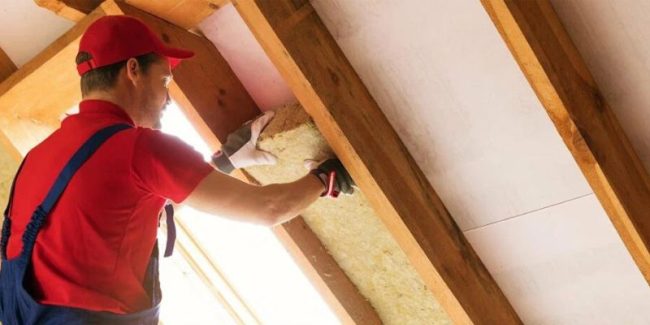Insulating your home is one of the best ways to save energy, lower heating bills, and make your living space more comfortable. In Ireland, the Sustainable Energy Authority of Ireland (SEAI) provides several grants to support homeowners in improving insulation. Whether you want attic, cavity wall, internal, or external insulation, this guide explains how to apply in simple steps.
1. Understanding House Insulation Grants in Ireland
SEAI offers three main routes for grants, depending on your home and financial situation.
1.1 Individual Energy Upgrade Grants
These are direct grants for specific insulation measures. Homeowners can choose to upgrade:
- Attic insulation
- Cavity wall insulation
- Internal wall insulation
- External wall insulation
Grant amounts are based on the type of home:
- Attic Insulation: €800 – €1,500
- Cavity Wall Insulation: €700 – €1,700
- Internal Wall Insulation: €1,500 – €4,500
- External Wall Insulation: €3,000 – €8,000
These upgrades can be carried out individually or combined with other energy improvements.
1.2 National Home Energy Upgrade Scheme (One-Stop Shop)
If you want a hassle-free process, the One-Stop Shop (OSS) model may be best. Here’s how it works:
- An OSS company manages everything—energy assessment, grant application, contractor selection, and project completion.
- The grant is deducted upfront, meaning you only pay the reduced amount.
- Additional upgrades like heat pumps, solar PV panels, and heating controls can also be included.
While convenient, this route may be more expensive than applying directly.
1.3 Warmer Homes Scheme (Free Upgrades for Eligible Homes)
This scheme provides fully funded home upgrades for low-income households that meet eligibility requirements.
You may qualify if:
- Your home was built before 2006.
- You receive certain welfare payments (e.g., Fuel Allowance, Disability Allowance, Jobseekers Allowance with children under 7).
This option covers insulation, heating upgrades, and energy-efficient lighting—at no cost to the homeowner.
2. Preparing Before You Apply
To ensure a smooth application process, prepare the following:
2.1 Check Eligibility
- Your home must have been built and occupied before 2011 for most grants (or before 2006 for the Warmer Homes Scheme).
- Homes must have a BER rating of B3 or lower before upgrades.
- You cannot claim a grant for work already completed under previous schemes.
2.2 Find Your MPRN Number
Your Meter Point Reference Number (MPRN) is an 11-digit number found on your electricity bill. It is required for grant applications.
2.3 Get a BER Assessment
A Building Energy Rating (BER) assessment may be needed before and after upgrades to measure improvements.
3. Choosing Your Application Route

You have two main ways to apply for a house insulation grant:
3.1 Apply Directly
- You choose a SEAI-registered contractor and submit your application online.
- Once work is completed and paperwork is submitted, SEAI processes the payment—typically within 4–6 weeks.
3.2 Use a One-Stop Shop
- OSS companies handle the process from start to finish.
- Useful for homeowners planning multiple upgrades at once.
4. Step-by-Step Guide to Applying
Step 1: Decide on the Type of Insulation
Consider which insulation upgrade will bring the best energy savings:
- Attic insulation for heat retention.
- Wall insulation for improved overall energy performance.
- Combination of upgrades for maximum effect.
Step 2: Get a BER Report
A BER assessor can recommend which upgrades will have the most impact and help meet grant requirements.
Step 3: Choose Your Approach
- DIY application – Apply directly on the SEAI website and hire a registered contractor.
- OSS route – Leave the entire process to a One-Stop Shop company.
Step 4: Submit Your Application
Provide required details including:
- MPRN number
- BER rating (if available)
- Contractor details (for direct applications)
Step 5: Complete the Work
Ensure all work is carried out by an SEAI-registered contractor following quality standards.
Step 6: Submit Completion Documents
- Declaration of Works
- BER Certificate (if required)
Step 7: Receive Grant Payment
Payments are usually processed within 4–6 weeks. If using an OSS, your bill will already reflect the grant deduction.
5. Tips for a Successful Application
- Compare Costs: One-Stop Shops may cost more, but they simplify the process. Direct applications require more effort but may be cheaper.
- Check Contractor Credentials: Use only SEAI-approved contractors to ensure eligibility.
- Plan Ahead: Warmer Homes Scheme applicants may experience longer waiting times due to high demand.
- Combine Grants: If possible, combine insulation with other energy upgrades like heating controls or solar panels to maximise savings.
6. Quick Reference: Grant Amounts

| Type of Insulation | Grant Range |
| Attic Insulation | €800 – €1,500 |
| Cavity Wall Insulation | €700 – €1,700 |
| Internal Wall Insulation | €1,500 – €4,500 |
| External Wall Insulation | €3,000 – €8,000 |
Conclusion
Applying for house insulation grants in Ireland is a cost-effective way to reduce energy bills, improve comfort, and increase the value of your property. With multiple schemes available—including fully funded options for eligible households—there is support for almost every type of homeowner. Whether you choose a direct application or a One-Stop Shop, start by checking your eligibility, preparing your documents, and selecting the right insulation for your home. The result will be a warmer, more energy-efficient home and long-term savings.
FAQs
1. Who can apply for house insulation grants in Ireland?
Homeowners, landlords, and approved housing bodies with homes built before 2011 can apply. Some schemes are income-based.
2. How long does it take to receive grant approval?
Grant payments are usually processed within 4–6 weeks after the work is completed and documents are submitted.
3. Is a BER assessment required?
Yes, a BER report is often needed to identify energy improvements and to confirm results after upgrades.
4. Can I combine multiple grants?
Yes. You can combine insulation with other upgrades like heating controls or solar PV, provided eligibility criteria are met.
5. Are grants available for new builds?
No. Grants are for existing homes built and occupied before 2011

